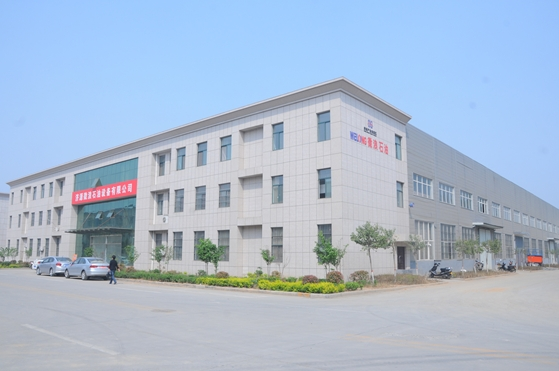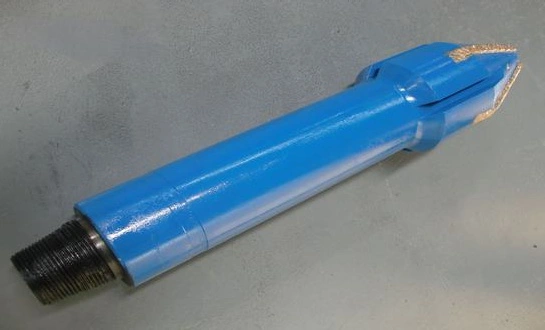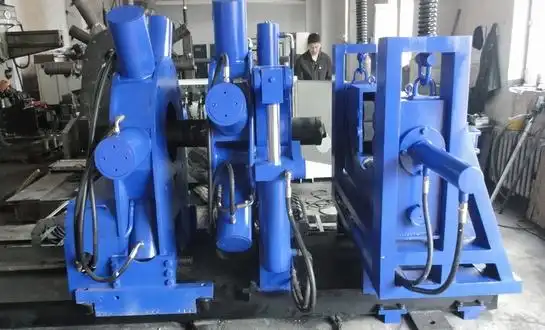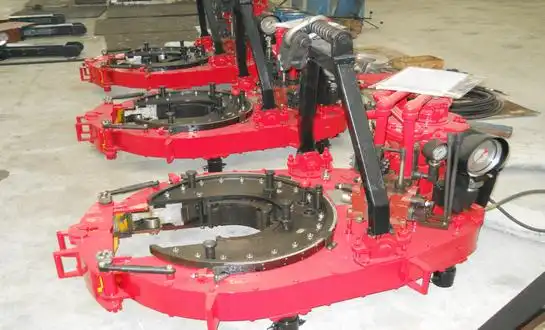What Are the Key Steps for Proper Tension Roller Cleaning?
Preparation and Safety Measures
Before initiating the cleaning process, it's essential to prioritize safety and preparation. Ensure the printing press is completely powered down and all moving parts have come to a full stop. Wear appropriate personal protective equipment (PPE), including gloves and safety glasses, to protect against chemicals and debris. Gather all necessary cleaning supplies, such as lint-free cloths, specialized cleaning solutions, and soft-bristled brushes. It's crucial to consult the manufacturer's guidelines for recommended cleaning agents and techniques specific to your tension roller model.
Step-by-Step Cleaning Process
Begin the cleaning process by gently removing any loose debris or paper dust from the tension rollers using compressed air or a soft brush. Next, apply an appropriate cleaning solution to a lint-free cloth and carefully wipe down the entire surface of each roller. Pay special attention to any grooves or textured areas where ink and debris may accumulate. For stubborn residue, use a soft-bristled brush to gently scrub the affected areas, being careful not to damage the roller surface. After cleaning, thoroughly rinse the rollers with clean water or a designated neutralizing solution to remove any remaining cleaning agents. Finally, allow the rollers to air dry completely before reassembling and restarting the printing press.
Post-Cleaning Inspection and Maintenance
Once the cleaning process is complete, conduct a thorough inspection of the tension rollers. Look for any signs of wear, such as uneven surfaces, cracks, or deformations that may affect performance. Check the roller bearings for smooth rotation and proper alignment. If any issues are detected, address them promptly or consult with a professional technician. Apply a thin layer of manufacturer-approved lubricant to the roller bearings to ensure smooth operation. Document the cleaning and inspection process, noting any observations or concerns for future reference. Regular cleaning and maintenance not only improve print quality but also extend the lifespan of your tension rollers and overall printing equipment.
Common Signs of Worn-Out Tension Rollers in Printing Presses
Visual Indicators of Roller Deterioration
Identifying worn-out tension rollers early is crucial for maintaining print quality and preventing more severe issues. Visual inspection can reveal several telltale signs of roller deterioration. Look for uneven wear patterns on the roller surface, which may appear as grooves, ridges, or flat spots. These irregularities can lead to inconsistent pressure distribution and affect print quality. Check for any visible cracks, chips, or peeling of the roller coating, as these defects can compromise the roller's performance and potentially damage the printing substrate. Discoloration or hardening of the roller material may also indicate chemical degradation or exposure to excessive heat, both of which can impact the roller's functionality.
Performance-Related Symptoms
Beyond visual cues, worn-out tension rollers often manifest through various performance issues in the printing process. One common symptom is inconsistent web tension, which can result in wrinkles, creases, or waviness in the printed material. Print registration problems, where colors or images do not align properly, may also indicate roller issues. Pay attention to any unusual noises or vibrations during press operation, as these can signal bearing wear or roller imbalance. Frequent paper jams or feed issues might be attributed to rollers that have lost their grip or become misaligned. Additionally, a sudden increase in waste or reprints due to quality issues could point to tension roller problems that require immediate attention.
Impact on Print Quality and Production Efficiency
Worn-out tension rollers can have a significant impact on both print quality and overall production efficiency. As rollers deteriorate, they may cause uneven ink distribution, leading to mottled or streaky prints. Color consistency can suffer, resulting in variations across the print run or even within individual sheets. The degradation of tension control can lead to registration errors, affecting the sharpness and clarity of printed images. From an efficiency standpoint, worn rollers often necessitate more frequent press adjustments and slower running speeds to maintain acceptable quality. This increased downtime and reduced productivity can substantially impact a print shop's bottom line. Recognizing these signs early and addressing tension roller wear promptly is essential for maintaining high-quality output and optimizing press performance.

Best Practices for Extending Tension Roller Lifespan in Print Shops
Regular Maintenance and Inspection Routines
Implementing a comprehensive maintenance and inspection routine is fundamental to prolonging the lifespan of tension rollers. Develop a scheduled maintenance plan that includes regular cleaning, as discussed earlier, to prevent the buildup of ink, paper dust, and other contaminants. Conduct visual inspections before each print run to catch any immediate issues. Perform more thorough examinations on a weekly or monthly basis, depending on usage, to assess roller condition, alignment, and bearing health. Use diagnostic tools, such as durometer tests for rubber rollers, to monitor hardness and elasticity over time. Keep detailed maintenance logs to track roller performance and identify patterns that may indicate the need for replacement or adjustment. By establishing and adhering to these routines, print shops can significantly extend the useful life of their tension rollers and maintain consistent print quality.
Proper Storage and Handling Techniques
The way tension rollers are stored and handled when not in use can greatly impact their longevity. Store rollers in a clean, dry environment away from direct sunlight and extreme temperatures. For rubber or polymer-coated rollers, avoid prolonged exposure to ozone, which can cause premature degradation. When removing or installing rollers, use proper lifting techniques and equipment to prevent damage to the roller surface or bearings. Consider using protective covers or sleeves for rollers during storage or when the press is idle for extended periods. Train staff on correct handling procedures to minimize the risk of accidental damage. Proper storage and handling not only extend roller lifespan but also ensure optimal performance when the rollers are put back into service.
Optimizing Press Settings and Operations
Fine-tuning press settings and operations can significantly reduce wear on tension rollers and extend their useful life. Ensure proper web tension settings across all stages of the printing process to prevent excessive strain on the rollers. Regularly calibrate tension control systems to maintain accurate and consistent pressure. Pay attention to environmental factors such as temperature and humidity, which can affect roller performance, and adjust press settings accordingly. Optimize press speeds and substrate selection to minimize friction and heat generation. Implement proper cooling systems if necessary to prevent overheating of rollers during long print runs. By carefully managing these operational factors, print shops can reduce the rate of wear on their tension rollers and maintain high-quality output for longer periods between replacements.
Source: CHINA WELONG-Oilfield tools Manufacturer
FAQ about Tension Roller
What is the typical lifespan of a tension roller?
The lifespan of a tension roller can vary significantly depending on factors such as usage frequency, maintenance practices, and operating conditions. On average, well-maintained tension rollers in a commercial printing environment may last between 1 to 3 years. However, some high-quality rollers with proper care can last up to 5 years or more. Regular inspection and timely replacement of worn components can help maximize the useful life of tension rollers.
How often should tension rollers be cleaned?
The frequency of tension roller cleaning depends on the volume and type of printing being done. As a general guideline, light cleaning should be performed daily or after each shift to remove surface debris and ink residue. More thorough cleaning should be conducted weekly or bi-weekly, depending on usage. High-volume print shops may need to clean their rollers more frequently, while those with lower production volumes might adopt a less frequent cleaning schedule. Always follow manufacturer recommendations and adjust cleaning frequency based on observed roller condition and print quality.
Can tension rollers be refurbished instead of replaced?
In many cases, tension rollers can be refurbished as a cost-effective alternative to full replacement. Refurbishment typically involves re-grinding the roller surface, replacing worn bearings, and in some cases, re-coating the roller. This process can restore the roller to near-original condition at a fraction of the cost of a new roller. However, refurbishment is not always possible or economical, particularly for rollers with severe damage or those that have already undergone multiple refurbishments. Consult with roller specialists or the original equipment manufacturer to determine if refurbishment is a viable option for your specific rollers.
In conclusion, proper tension roller maintenance is crucial for achieving and maintaining high-quality print results. By implementing regular cleaning routines, promptly addressing signs of wear, and following best practices for roller care and operation, print shops can optimize their equipment performance and deliver superior products to their clients. For more information on tension rollers and other oilfield products, please contact us at oiltools15@welongpost.com. Welong is dedicated to meeting your printing and industrial needs with top-notch solutions.





